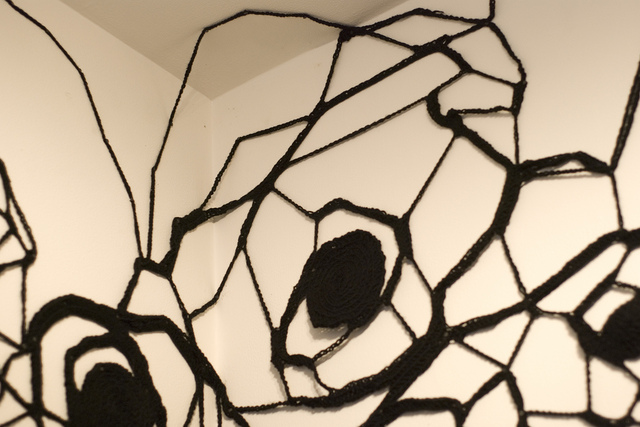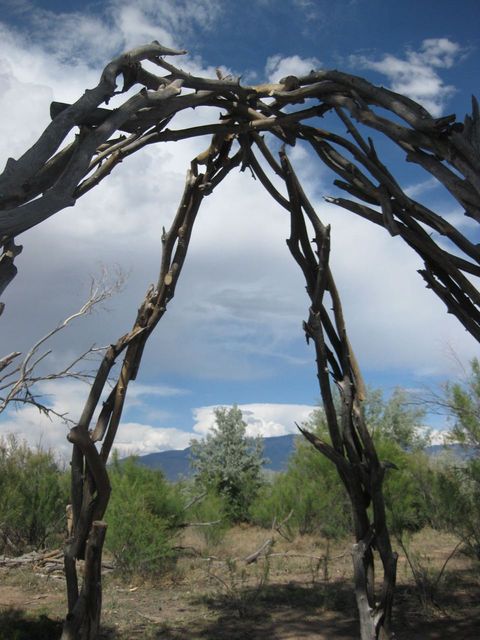This is a preview of LAND/ART . I state this up front simply as a foil against the gargantuan nature in describing the entire project, which includes more than 60 artists and 25 arts organizations that have filled out their summer and fall schedules with exhibitions, site-specific projects, lectures, performances, tours, poetry readings and film screenings that relate to the subject of land-based art.What most of us consider Land Art began in the ’60s around a small circle of artists, the most prominent being Michael Heizer, Walter De Maria, Nancy Holt, Dennis Oppenheim and Robert Smithson. Smithson’s name and his Spiral Jetty—a 1,500-foot spiral of rock and earth that juts into Utah’s Great Salt Lake—have become synonymous with the entire movement. The socioeconomic, critical and environmental positions these artists staked brought much of their art practice out of the normal gallery setting and into the land. In fact, many of the projects commonly associated with Land Art were realized here in the Southwest. Historically, what has come to define the group were those interventions in the landscape, sculptures constructed from natural materials and installations that questioned the traditional role of the gallery in relation to art. The initial wave of Land Art extended into the ’70s through artists like Charles Ross, Alice Aycock and James Turrell, who used it both as a platform for environmental concerns and as a foundation in their efforts to capture a certain set of phenomena in large spaces. Inevitably, other formal and conceptual movements developed concurrently with Land Art—not to mention new technologies—and its perceived role and qualities expanded. It became increasingly difficult to keep Land Art in a category all its own as it slipped back and forth between noun and adjective. Over the next six months, LAND/ART —a project realized primarily through the organizing efforts of Suzanne Sbarge—throws everything at us, waiting to see what sticks and what doesn’t. That effort seems geared toward moving beyond Land Art’s historic aura, creating an inclusive roster that clearly puts forth the belief that working with the land is a valid, necessary and popular contemporary practice. However, we’ll have to see what effect such a generalized approach might have. Will we see a fracturing of Land Art’s various fields of thought into separate movements or a Voltron-like consolidation of purpose? Either way, I’m looking forward to the chance to wade through the distinctions presented by everyone included in this diverse project. Because the central question LAND/ART poses relates to its definition: What is it?Leading us off has been Karl Hofmann’s COLOSSUS at the Gold Street Lofts and 516 ARTS; A Peculiar Hush by Danielle Rae Miller at the Open Space Visitor Center; Here & There: Seeing New Ground at 516 ARTS and other locations; and performances by Laurie Anderson at the KiMo Theatre and the Museum of Natural History’s planetarium. There’s also an installation at THE LAND/gallery featuring an environmental poetry installation by Miriam Sagan and 14 other poets; Air cube + at Richard Levy Gallery; an installation by Gardner Post & Brian Kane at CCA; and gardens planted in broken-down cars outside the Harwood. (Inhale here.)Many of the subjects alluded to above will be dealt with in a much more substantive way during this weekend’s LAND/ART Summer Symposium. Saturday’s events include a bus tour directed by The Center for Land Use Interpretation through parts of New Mexico and a reading with indigenous poets at 516 ARTS. On Sunday, the Albuquerque Museum hosts an artist talk by Lynne Hull, a panel discussion led by Bill Gilbert (which includes artists and organizers), two opening receptions and a talk by Basia Irland. By the way, you can get all of this information, including times and locations, at landartnm.org. It will be a challenge to see everything that LAND/ART has to offer. But honestly, it seems no matter where you go between now and November, you’re bound to cross paths with a lecture, exhibition, film screening or installation connected to LAND/ART . Even during your run near the Bosque, you might encounter a painted jetty jack or some other naturalized deformation in our landscape.
David Leigh is the former director of the Fine Arts Gallery at the College of Santa Fe.










